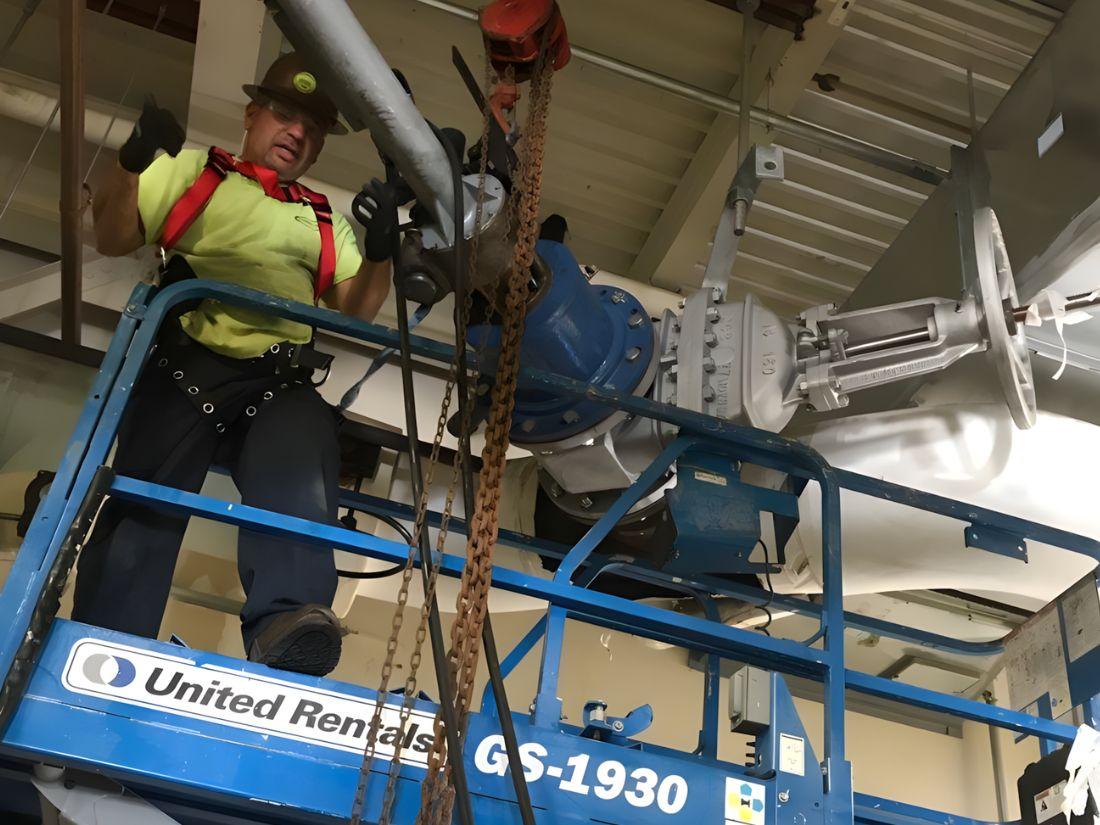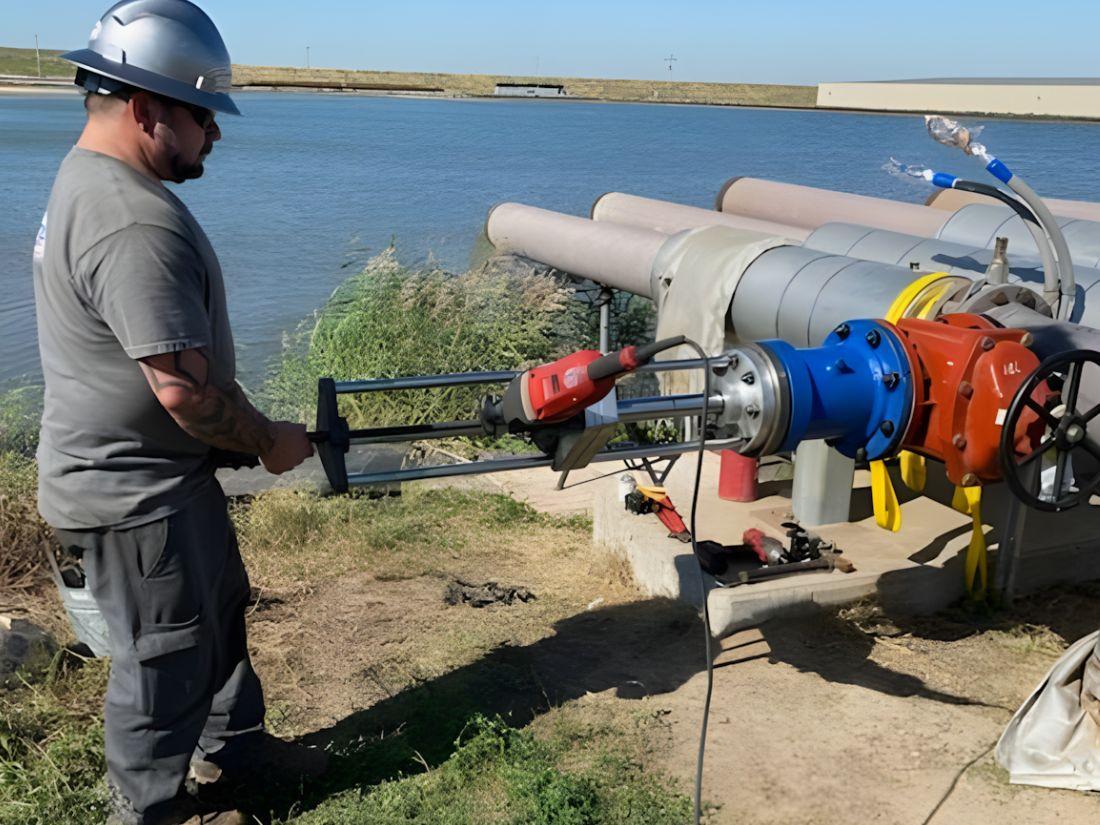Request Quote
Hot tapping, also known as pressure tapping, is a sophisticated engineering process that allows connections to seamlessly link up to existing, pressurized pipelines or vessels without halting their operation. Industries aiming to sustain uptime, install new branches, perform repairs, or reroute flow should leverage this technique.
However, a successful hot tap demands engineering precision, cutting-edge equipment, and rigorous adherence to safety protocols. That’s why it’s best when left to the professionals.
If you’re interested in these services, it’s smart to go into it with a grasp of the engineering behind a successful hot tap. With the following information, you’ll know what you’re getting into.
At its core, hot tapping enables modifications to live pipelines without disrupting service or exposing the medium inside. The process involves multiple interconnected stages.
The operation starts with a comprehensive assessment of the pipeline, including its material type, operating pressure, and temperature conditions. Engineers must determine whether the pipeline is capable of withstanding the physical and thermal stresses imposed by the procedure. Once deemed suitable, select the location for the hot tap based on factors such as flow dynamics and structural integrity.
Since there’s a lot that goes into hot tapping, one of the cornerstones of success is strict adherence to industry standards. Every step, from material selection to cutting and sealing, demands meticulous care to maintain both operational safety and long-term reliability.
Precision begins with the accurate alignment of equipment and extends to every incision and weld. Even minute deviations can lead to misalignments that jeopardize the integrity of the newly added connection. Engineers utilize laser alignment tools, pressure gauges, and advanced software to minimize these margins.
All qualified services have stringent engineering standards, such as those from the American Society of Mechanical Engineers (ASME) and the American Petroleum Institute (API). The standards support safety practices while delivering reliable, consistent results across varying project specifications.
Failure to comply with these standards increases the risk of operational incidents, environmental harm, and costly downtime. Thus, they form an indispensable framework for all aspects of hot tapping.
The success of the operation relies on the use of advanced equipment. From the initial fitting to the drilling tools, every component must work harmoniously to achieve the desired outcome.
The meticulous design of hot tapping machines allows them to perform cuts while maintaining a pressure-tight seal. They range in size and configuration based on the pipeline’s diameter and material. Advanced machines feature automated controls to improve the accuracy of cuts and reduce manual intervention.
Gate or ball valves are commonly employed during hot tapping to isolate pipeline sections post-operation. The valves play a dual role, offering flow control and a safety barrier against accidental leaks.
Professionals decide on the choice of a cutting tool based on the pipeline material. For example, carbide-tipped hole saws are common thanks to their ability to make precise cuts in steel, while high-strength cutting blades are better for more challenging materials.
Split tees or other branch fittings serve as the foundation for most forms of hot tapping assembly. These fittings provide structural stability and integrate seamlessly with the current pipeline.

Safety is paramount in hot tapping due to the risks of working on pressurized systems, hazardous materials, and extreme temperatures. Engineers follow a comprehensive set of protocols to mitigate these risks:
Teams must conduct a detailed risk assessment to identify hazards, such as potential leaks, explosive risks, or environmental impacts. Contingency plans are prepared to address worst-case scenarios.
Extensive testing ensures the existing pipeline can withstand the operation. Professionals use techniques like ultrasonic testing and radiographic inspections to detect cracks or wall thinning that could lead to failure during the process.
Hot tapping typically involves live systems operating at high pressure and extreme temperatures. Engineers establish parameters to ensure these variables remain within safe limits throughout the operation, with real-time data monitored via advanced sensors.
Engineering teams must prepare for each job with extensive emergency procedures, including immediate shut-off plans and provisions for environmental cleanup, should a breach occur.

Despite the sophistication of hot tapping, this service poses several engineering hurdles that demand expertise to manage effectively. This is where having a professional on the job is the most helpful.
Choosing materials compatible with the pipeline and its contents is critical. Disparities between metals can lead to galvanic corrosion, reducing the lifespan of the connection. Engineers carefully match materials to ensure long-term durability and strength.
It can be difficult to achieve a cut at the exact depth and angle required. Any irregularities can affect the seal or necessitate additional repairs.
Working with pipelines carrying fluids at hundreds or thousands of pounds per square inch creates a demanding environment. That’s why engineers use reinforced fittings and precision-engineered tools specifically made for these conditions.
Pipelines carrying substances at extreme temperatures, such as cryogenic liquids or heated gases, add thermal stress. Knowing how to deal with these extremes in advance, engineers must select fittings and tools capable of tolerating these conditions without warping, cracking, or failure.
Preventing spills or emissions is a significant concern, especially when operating on lines carrying hazardous chemicals. Every hot tap process incorporates containment measures, including spill trays, secondary barriers, and real-time gas monitoring, to minimize any form of negative environmental impact.
While we’re primarily focused on the current engineering behind successful hot taps, we’d be remiss to completely ignore some of the current advancements that have pushed the boundaries of what hot tapping can achieve. For example, automated systems and robotic tools have greatly transformed the process in recent years, particularly in challenging environments such as deep-sea pipelines or high-risk industrial zones. These technologies reduce the need for direct human intervention for increased efficiency and safety.
Additionally, the development of nondestructive testing (NDT) methods has improved material evaluation prior to hot tapping. Techniques, like ultrasonic testing and visual inspection with drones, support pipeline integrity and diminish the likelihood of failure.
So whether you’re working on an older system or one that’s on the cutting edge, you need a team that can handle this entire process with ease. Fortunately, our hot tapping services are an incredible choice. No matter what challenges the pipeline poses our team of experienced engineers will be able to handle the problem.